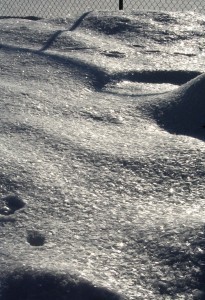Edward Willett's Blog, page 66
February 1, 2011
An epic tale of self-control
 You may have seen this news item recently about how a toddler's self-control at the age of three can predict his or her health and wealth once grown.
You may have seen this news item recently about how a toddler's self-control at the age of three can predict his or her health and wealth once grown.
This study has been running through my mind for a week because I have, I think, demonstrated a tremendous amount of self-control over the past few days, and although I am not three years old (not physically, anyway; emotionally…well, you'll have to ask my wife), I'm still hoping that it might be a harbinger of great health and wealth to come.
To understand just how much self-control I have exerted, you first have to understand something: I am a man. Not only that, I am of that breed of man known as the "gadget-lover." Nothing makes me happier than unpacking a new electronic gadget, unless it's handling a new electronic gadget, fondling it sleek black slides, admiring my reflection in its shining surface, twiddling its buttons, tweaking its settings…
Well, you get the idea.
And yet, for a week now I have successfully fought the urge to set up that most tempting of gadgets, a brand new Dell Studio XPS Windows 7 computer. I have not even peeled the thin transparent cover off of the shining black surfaces, though I have longed to (oh, how I have longed to). I have only admired its sleek red metal highlights from afar. I have not plugged anything into it, or it into anything else. I haven, in short, been self-controlling like crazy.
The reason? Because I'm awaiting the arrival of another new gadget, a 23-inch widescreen monitor. Once I have it (any day now! Oh, UPS, where art thou?), then I can move my old computer, whose own new-gadget appeal has, alas, long since faded into blah everydayness, into another room, along with my old monitor (which also once quickened my pulse, but has become nothing but an old familiar face). Then I can move the new computer into my office, hook it up to the new monitor, and start a fresh relationship unsullied by the baggage of yesteryear, which will mostly stay on the old computer, still conveniently close at hand for the transfer of whatever files I decide absolutely have to be transferred to the new machine.
Were computers capable of feelings, this might be expected to upset the old computer, since it is rather akin to living with someone for a while, then dumping her and moving in with someone else, but keeping a bunch of books and clothes at the first person's place, dropping by to fetch them as they are needed.
Fortunately, computers are not capable of feelings. Except…
Well, none of the impending arrangements can be a secret to the old computer, since the new computer and the new monitor were both ordered using its browser and Internet connection. And last night, at a most inopportune time, the old computer decided that it would, on its own initiative. sever its relationship with several of its gadgety friends. Though the computer and these gadgets have long kept in touch with each other and with me via USB, last night, all communication ended. Which forced me to spend rather more time than I wanted on hands and knees scrabbling among the tangle of cables beneath the desk to plug everything in to different USB ports. And since my Outlook mail file is on an external hard drive that was one of the items involved, Outlook got confused, and so this morning I'm having to run an inbox repair tool so that I can send and receive emails reliably.
Obviously just a coincidence. Machines don't have feelings.
But I confess I'm just a little leery about having to leave the house today. If I return to find a smoking pile of rubble…
Well, we'll all know who to blame, won't we?
(The photo: Still life with orange flower.)
January 30, 2011
Me, singing "Me"
While setting up my video last week for the virtual classroom visits-by-authors I was part of, I had the urge to give my microphone a good test by singing. So I recorded one of my party pieces, "Me" from Disney's Beauty and the Beast. The result pleased me enough I decided to YouTube it…and here it is!
January 28, 2011
Redefining the kilogram
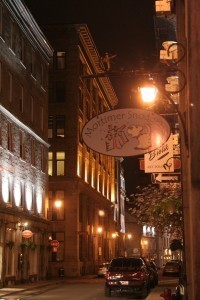 This year marks the 220th anniversary of something that grew out of the French revolution and yet sparked a revolution in my own life, and the lives of many other Canadians of a certain age, two centuries later.
This year marks the 220th anniversary of something that grew out of the French revolution and yet sparked a revolution in my own life, and the lives of many other Canadians of a certain age, two centuries later.
I'm not talking about the guillotine, although it's true I seem to vaguely remember a K-Tel commercial for something very much like a miniature guillotine for chopping carrots. (OK, I may be making that up, but it sure sounds like a K-Tel product!).
I'm talking about the metric system, the switch to which (called metrication) was a major feature of my teenage years, as Canada changed over and suddenly speed limits, food labels and gas pumps lost miles, ounces and gallons in favor of kilometers, grams and liters.
Although the U.S. is one notable holdout, worldwide the metric system rules: which is why any change in the way the units are defined is worth noting. And such a change may be in the offing for the kilogram.
Before I get to that, though, let's review the creation of the metric system, shall we? (For the following information, I would like to thank the 20-years-younger version of me who wrote a column about the metric system in 1991.)
Like other European countries, before 1790 France had a system of weights and measurements that had evolved over centuries. But although the pouce and pied-de-roi were roughly equivalent to the British inch and foot, they weren't identical. Not only that, every French province had slightly different measurement: the Parisian pied-de-roi was 11 percent longer than the one in Strasbourg, for example, and 10 percent shorter than the one in Bordeaux! (Don't like your height? Just move!)
But then along came the French revolution, and once the storming of the Bastille and the riots and chopping the heads off of aristocrats and others was more or less over, the powers-that-came-to-be proposed a number of interesting reforms, including the 10-hour clock, the 400-degree circle…and a unified system of weights and measures.
In March, 1791, the French National Assembly accepted the proposal from the Academy of Sciences to make one quarter of the Earth's meridian the basis for a new system measuring length. One 10-millionth of that distance became the meter. A rod of platinum was produced to represent this ideal, unchanging length, and in 1799 was itself was declared to be the standard meter.
The gram was defined as the weight of one cubic centimeter of pure water, which made the kilogram the weight of one liter of pure water. But water is obviously inconvenient to use as a standard, so once some details had been worked out, a platinum cylinder weighing the same as a liter of water at 4 degrees Celsius (water's point of maximum density) was created in 1799, and the kilogram was formally defined as being equal to the mass of that piece of platinum.
In 1889 a new prototype, a cylinder 39.17 mm tall and the same in diameter, made of an alloy that's 90 percent platinum and 10 percent iridium, became the official kilogram, and has been ever since. This International Prototype Kilogram, or IPK, is stored, along with six official copies, in an environmentally monitored safe in a vault on the outskirts of Paris.
The original meter rod has long since been cast aside in favor of more precise definitions. Currently, the meter is defined at the distance traveled by light in 1/299,792,458 second.
Now the official kilogram may finally be in for a redefinition, as well.
See, although by definition the official kilogram cannot weigh less than a kilogram, the fact is it's losing mass, now varying by as much as 50 micrograms from the "national copies" held around the world. Nobody knows why, although theories include the gradual loss of the hydrogen blasted into the alloy when the cylinder was forged, or the use of coarse emory paper and cleaning fluids on it in the past.
In any event, this fall, the General Conference on Weights and Measures in Paris will begin changing the definition of the kilogram to something based on a fundamental physical constant, just like the meter is based on the speed of light. The scientific equivalent of a donnybrook is expected, because some scientists would like to define the kilogram as the mass of a certain number of silicon-28 atoms, while others would prefer to use a mass-measurement device called a "Watt balance" to define the kilogram in terms of voltage and current.
While the scientists argue, though, perhaps the rest of us, in these post-Christmas dieting days, can take heart. After all, if a platinum-iridium ally stored in a vacuum inside several bell jars can lose mass, maybe you can, too!
The photo: Old Montreal at night.
January 27, 2011
I've been a bad blogger…
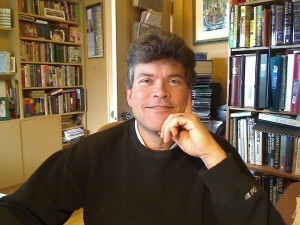 …by not posting regularly this week as I did last, but although I was a bad little blogger, I was a good little writer. See, Twist of the Blade, the sequel to Song of the Sword, and the second book in my brand-new YA fantasy series Shards of Excalibur, is in the revision stage. And there were lots of revisions. Which I did not allow enough time to do before they were due, which was Friday (actually a week earlier, but I'd already begged for an extensions.)
…by not posting regularly this week as I did last, but although I was a bad little blogger, I was a good little writer. See, Twist of the Blade, the sequel to Song of the Sword, and the second book in my brand-new YA fantasy series Shards of Excalibur, is in the revision stage. And there were lots of revisions. Which I did not allow enough time to do before they were due, which was Friday (actually a week earlier, but I'd already begged for an extensions.)
These weren't just a-word-here-and-a-word-there revisions, either, but take-out-that-scene-right-a-new-scene-move-that-scene-over-there-and-then-rewrite-it-so-it-makes-sense-and-oh-darn-I-just-contradicted-something-in-Chapter-One-I'll-have-to-go-back-and-fix-that-too revisions.
Also, embarrassing revisions. Like rewriting scenes so I was showing and not telling. Adding sensory details. That sort of thing. You know, the stuff I tell my writing students about all the time when I'm working with young writers, the stuff I know to do, but didn't do in the rush of getting the book submitted to the editor by something approaching the deadline. Sigh.
Still, my editor at Lobster Press, Mahak Jain, made some very trenchant and pertinent comments and suggestions that have resulted, I trust, in a better book (and since I expect at least one more round of revisions, it will be even better after that).
But, because I was behind, I concentrated on doing that instead of doing other things earlier this week. And then, today, my concentration was on something that was a new experience for me: a virtual author visit to multiple schools, a program created by the Saskatchewan Chapter of CANSCAIP (that's the Canadian Society of Children's Authors, Illustrators and Performers).
Although I did pretty much what I would have done at an in-person school presentation (although I begged off singing at the end, although asked, because I wasn't sure how well the audio would have worked), talking about all the books I've written, reading from Song of the Sword, and answering questions, rather than seeing anyone in person, all I was looking at was the blank lens of my Webcam up above my monitor, and an Elluminate Live! virtual classroom screen, which shows you a list of people (or, in this case, schools) logged in at the upper left, questions and comments being typed below that, your own video feed (it could show other people's video, too, but there wasn't any for this session), and a whiteboard where you can write, draw, or, in my case, post a PowerPoint presentation showing my book covers and some other stuff. So except for the voice of the moderator, Linda Aksomitis, who asked some preliminary questions, helped look after technical problems and then chose the questions from the schools for me to answer at the end, it was pretty much like talking to myself.
Which maybe isn't that strange for a writer, because after all, that's what we do all day at the keyboard: talk to ourselves. We just don't do it out loud. (Usually.)
It all seemed to go pretty smoothly, though, and now I'm really looking forward to my second virtual classroom visit tomorrow morning.
Now I'm about to head off to Marion McVeety School for an authors' evening it's hosting, where I'll be talking to parents and students and promoting my books…and books in general: both the virtual visits and this real-life one are in aid of Family Literacy Day. Authors have a vested interest in promoting literacy: writing stuff that nobody could read would be a singularly silly enterprise. (Although we'd probably do it: many would-be authors write reams that will never be read by anyone…and yet, they write.)
As for what's next in my own writing: well, I've also had a long phone conversation with Sheila Gilbert at DAW Books about the first Lee Arthur Chane fantasy, Magebane, coming out this October, which means I now have to do the revisions on it over the next couple of months. I've also got Blue Fire to finish up, some chapters of a new YA fantasy, Masks, to polish off to run by my agent, more Twist of the Blade revisions to come, and most immediately, several additional chapters for, and a complete rewrite of, a history of Government House. Oh, and some science writing, too.
No rest for the wicked, they say. I must have been really, really bad.
The photo: Me, as a virtual, though not necessarily virtuous, visiting author.
January 20, 2011
Twist of the Blade synopsis
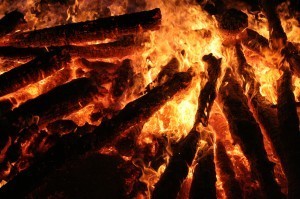 I don't think I've posted this; maybe I have, but in that case, well…here it is again. It's the description of Twist of the Blade, Book 2 of the Shards of Excalibur, as included in Song of the Sword.
I don't think I've posted this; maybe I have, but in that case, well…here it is again. It's the description of Twist of the Blade, Book 2 of the Shards of Excalibur, as included in Song of the Sword.
No time for more this morning since I'm desperately trying to finish revisions to, yes, Twist of the Blade. Following hard on the heels of which will be revisions to Magebane: I heard from Sheila Gilbert at DAW this morning and will be talking to her about the book tomorrow. Of course, there'll also be more revisions to Twist of the Blade. I'm still trying to make Blue Fire submittable. And I'm in the final stages of research for my addition to/rewriting of the official history of Saskatchewan's Government House (it's currently titled A Tower of Attraction but I'm hoping we come up with something better), after which I'll have to finish the writing and revision in pretty short order. Oh, and my agent would really like to see some sample chapters of Masks, a proposed YA fantasy he's quite excited about.
Why, yes, I am keeping busy. Thanks for asking!
Anyway, here's what you can look forward to in Twist of the Blade:
In France, archaeologists have begun to investigate newly discovered cave paintings…but deeper inside the cave, resting below a pool of icy black water, lies a different treasure: the second shard of Excalibur.
Ariane may be on a quest to stop Rex Major—Merlin's modern-day persona—from taking over the world, but she still has to deal with high school. Wally's sister, Felicia, and her clique have vowed to take revenge, but with Ariane's newfound powers and the first shard of Excalibur by her side, the fight takes a dangerous turn. After Felicia is gravely injured, Wally begins to question his loyalties. Can he trust Ariane or the Lady of the Lake, the woman who gave Ariane her dangerous powers? Rex Major is more than willing to take advantage of Wally's doubts.
Ariane must recover the second shard–but this time she may have to do it alone.
And now I'd better get back to making sure she does…or doesn't. (I'm not giving anything more away.)
The photo: Hallowe'en bonfire in Banff.
January 19, 2011
Cloning a mammoth
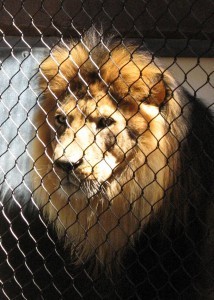 One of the more striking exhibits at the Royal Saskatchewan Museum is the woolly mammoth that looms over you, emerging from a forest, when you round one of the corners in the Earth Sciences Gallery.
One of the more striking exhibits at the Royal Saskatchewan Museum is the woolly mammoth that looms over you, emerging from a forest, when you round one of the corners in the Earth Sciences Gallery.
Twelve thousand years ago, you might have encountered exactly that scene while strolling through Saskatchewan: these days, the closest you can come is a museum exhibit, because woolly mammoths are, of course, quite extinct.
But gone forever? Perhaps not. As the hag tells Prince Caspian in the C.S. Lewis book of the same name, "You can always get them back."
Oh, sure, she was talking about the White Witch, but she could have been talking about mammoths: at least, that's the hope of a group of Japanese researchers led by Akira Iritani, professor emeritus of Kyoto University.
Nor will it require black magic. Just a chunk of tissue from one of the mammoths periodically found frozen in the ice, an elephant's egg cell, an elephant's uterus, time…and luck.
The result will be, if all goes well, a living mammoth genetically identical to the long-dead but freezer-fresh original: a clone.
"Clone" sounds very science-fictiony, but in fact we've been surrounded by them for thousands of years: every plant produced from a leaf cutting is a clone, genetically identical to the plant the cutting came from.
"There are also naturally occurring clones in the animal kingdom." (I'm quoting myself here, from my book Genetics Demystified.) "With the right chemical stimulus, the unfertilized eggs of some small invertebrates, worms, fish, lizards and frogs can develop into full-grown adults that are clones of the mother, a process called parthenogenesis. And, of course, identical twins are clones of each other.
"However, the first artificially produced animal clone was created by John Gurdon in the 1970s. He transplanted the nucleus of a somatic cell from one frog into the unfertilized egg of a second frog that had been enucleated—its nucleus had been destroyed by ultraviolet light. The egg developed into a tadpole genetically identical to the frog whose cell the nucleus came from. However, it did not grow into an adult frog.
"This type of cloning is called somatic nuclear transfer. It was not successfully carried out in mammals until Ian Wilmut and colleagues at the Roslin Institute in Edinburgh successfully cloned Dolly the Sheep in 1997. Wilmut took a nucleus from a mammary gland cell of a Finn Dorsett sheep, and transplanted it into the enucleated egg of a Scottish blackface ewe. The nucleus and egg were forced to fuse (and stimulated into dividing) with a jolt of electricity, a process called electrofusion. The new cell divided, and was placed in the uterus of a blackface sheep to develop. Dolly was born some months later. The process had been tried 275 times before it was successful."
Since Dolly's day, many other mammals have been cloned: including, a year ago, a Pyrenean ibex, which went extinct in 2000. Scientists had preserved a skin sample in liquid nitrogen, and were able to extract DNA from it, replicate it, insert it into goat eggs, and create a viable embryo that was born alive to its surrogate mother.
Unfortunately, the newborn kid had lung defects that soon proved fatal. Which is one reason luck is vital to the attempt to resurrect the woolly mammoth. Cloning based on frozen DNA is only about 30 percent successful, and even extracting a good DNA sample from frozen mammoths— frozen for a very long time and at temperatures nowhere near those of liquid nitrogen—has proven nigh-impossible.
But recently, Teruhiko Wakayama of the Rikan Centre for Developmental Biology developed a new technique that enabled him to extract viable DNA from a mouse frozen for 16 years at temperatures comparable to those of frozen mammoths. Using a method based on that technique, Iritani and his research team have successfully extracted undamaged nuclei from mammoth eggs.
Now they'll implant that DNA into an elephant's egg, creating an embryo which will be implanted in an elephant's uterus. There are many pitfalls along the way, but Iritani hopes to succeed within five or six years.
The hope is that having a living mammoth to study will help scientists understand why they went extinct in the first place. As well, success with a mammoth might point the way to bringing other extinct species back from the grave—and insuring that currently endangered species aren't lost forever if they fall extinct.
But never mind that. The coolest thing of all would simply be seeing a woolly mammoth, alive and in the hairy flesh.
In Lewis's Narnia books, the White Witch made it "always winter and never Christmas." For frozen mammoths, it's been winter a very long time…but Christmas, spring and summer could be just around the corner.
The photo: The King in exile, Denver Zoo.
January 18, 2011
Song of the Sword on McNally Robinson list of Aurora-eligible titles that "excited the staff"
 Too busy working on revisions for Twist of the Blade, Book 2 of the Shards of Excalibur series, to write a long post this morning, so this little self-serving item will have to do. As the title says, Song of the Sword shows up on a list of titles that "excited the staff" at McNally Robinson Booksellers and are eligible for this year's Aurora Award for best Canadian science fiction or fantasy novel in English.
Too busy working on revisions for Twist of the Blade, Book 2 of the Shards of Excalibur series, to write a long post this morning, so this little self-serving item will have to do. As the title says, Song of the Sword shows up on a list of titles that "excited the staff" at McNally Robinson Booksellers and are eligible for this year's Aurora Award for best Canadian science fiction or fantasy novel in English.
It's a good list to be on:
Eligible works that excited our staff in 2010 include: Waking the Witch by Kelley Armstrong, Tesseracts 14 edited by John Robert Colombo and Brett Alexander Savory, A Book of Tongues by Gemma Files, Under Heaven by Guy Gavriel Kay, Evolve edited by Nancy Kilpatrick, Sweet Tooth Volume 1 and Volume 2 by Jeff Lemire, Black Bottle Man by Craig Russell, Watch by Robert J. Sawyer, The Dark Deeps by Arthur Slade, Stealing Home by Hayden Trenholm, and Song of the Sword by Edward Willett.
And, yes, the 2011 Aurora Awards are now open for nominations from any Canadian citizen or permanent resident. Also, SF Canada, the association of Canadian speculative fiction professionals of which I am currently president, has announced that it will be providing the SF Canada Award, a $500 cheque, to the winners of the Best Novel categories in both French and English, beginning this year. Check out the press release on our website.
Now back to revising…
The photo: Sailboat just outside Nanaimo harbour, Vancouver Island
January 17, 2011
My ebook odyssey
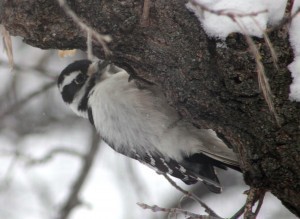 All the cool kids are writing about their experiences with ebooks these days, and since I've long aspired to be cool (though, alas, I have yet to reach that exalted state) I thought I would give a brief account of my own experiences as writer and reader of same.
All the cool kids are writing about their experiences with ebooks these days, and since I've long aspired to be cool (though, alas, I have yet to reach that exalted state) I thought I would give a brief account of my own experiences as writer and reader of same.
I take you back to those long-gone days of ten years ago, when people were just beginning to talk about ebooks. Some said they'd eventually be really, really big; others pooh-poohed them (after all, can you read them in the bathtub? Huh? Well, can you?).
At the time, I'd had three novels published, all by small publishers, but I had several unpublished manuscripts. One of those, Spirit Singer, had made the usual rounds to the YA fantasy publishers during the 1990s (when, pre-Harry Potter, YA fantasy was a far, far rarer thing than it is now) with no luck, though I did receive occasional positive feedback from editors (which, as aspiring authors do, I clung to like a man lost at sea might cling to driftwood).
I became aware of a kind of alternative publishing universe, publishers who were putting out ebook originals. At the time, that mostly meant in HTML or possibly PDF format; some were also selling them on floppy disks (remember those?) and other formats. A few were beginning to put out some of their titles in print-on-demand format as well.
More as an experiment than anything else, I submitted Spirit Singer to one of these publishers, Awe-Struck. It was accepted, and shortly came out in both ebook and POD format.
Royalties were, and continue to be, miniscule. But! Spirit Singer, in its POD form, went on to win the Regina Book Award for best book by a Regina author at the 2002 Saskatchewan Book Awards, which carried with it a $1,500 prize. As well, in its POD form, Spirit Singer made it into enough libraries that it continues to generate a small amount of income annually through Canada's Public Lending Right Commission, which pays writers an annual fee for books of theirs found in Canadian libraries.
So, my first dabble into ebook publishing was both a failure and a success. Spirit Singer failed as an ebook: in almost ten years, it has generated almost no sales. But by putting it into print, I was able to make its publication worthwhile: which indicated to me that ebooks weren't ready for prime time, at least as far as my writing was concerned.
Fast forward to the present, though, and I now have several more books available as ebooks, with one big difference: they're books that were first published in print, and then published as ebooks by my print publisher. All three of my DAW SF novels can be had as ebooks, for example, as can Genetics Demystified from McGraw-Hill.
But now comes a new wrinkle: a lot of authors are beginning to experiment with putting their own books out in ebook format, without going through a publisher at all: both their backlist, books traditionally published for which they own or have obtained the ebook rights, and books that have never been traditionally published.
It seems, in fact, like the cool thing to do, and so (see my opening paragraph), I've tried that, too. Which is why you can now buy Andy Nebula: Interstellar Rock Star and Andy Nebula: Double Trouble as ebooks in a variety of formats, including Kindle. They haven't exactly set the ebook world aflame, but I've sold a very small number of copies, and even enough money to buy a latte is more than the books were generating before (except for the PLRC payment for Andy Nebula), so, why not?
My next experiment will probably be self-publishing one of my unpublished books, one of those that has come close to publication several times over the years but never quite made it. (Probably Star Song, a book that was on the verge of acceptance by Walker & Co. some 20 years ago when Josepha Sherman was editor, but then was rejected when the publisher died and the new publisher decreed Walker would no longer publish science fiction.) But that'll have to wait until I have time to give it a thorough edit (I suspect I can improve it quite a bit), format it, get cover art, etc., etc.
Obviously, the reason ebooks are taking off right now is the development of relatively inexpensive, hand-held readers. Back when Spirit Singer came out, this was what all those first-generation ebook publishers were talking about: that glorious future day when such readers would be widespread.
I've used several different devices to read ebooks. I still have a Hiebook, a Korean-made ereader with a pretty low-contrast (but backlit!) screen. I read a lot of books on that. I got hooked on David Weber's Honor Harrington series using that ereader, because Baen Books was one of the earliest to put backlist books online for free in the hope it would spur future sales. It certainly has; I've been reading Weber books ever since, and buying them when they first come out.
Then, for quite a while, I read books on my Pocket PC phone. I switched from that to an iPod Touch, and now that most glorious of ebook reading devices, the iPad. For Christmas, I bought my avid-reader nine-year-old daughter a Kobo: and I'm starting to see Kobos and other ebook readers all over the place.
So it seems ebooks have arrived–but despite all the hype and excitement, it's early days yet. Writers and publishers are scrambling, trying to figure out how things are changing and what it will mean to them personally. (Although one thing I hope it means is an end to that tired complaint "You can't read them in the bathtub!")
I don't have any great insight; I'm just trying to keep tabs on whats going on and hoping, ultimately, that the upsurge in ebooks will mean that more people will read my books and enjoy the stories I've chosen to tell.
Oh, and pay me for the privilege. That'd be nice.
The photo: A woodpecker outside my office window.
January 14, 2011
On Shovelling (a winter sonnet)
With apologies to Milton.
When I consider how my morns are spent,
Or half my days, in this world, dark and wide,
With that snow shovel, frozen to my hide,
That seems so useless, though its blade is bent
To scrape so well the sidewalk, and present
My bare sidewalk (lest postman, coming, chide,
"I almost slipped; indeed, I could have died!"),
I mutter oaths; but Patience to prevent
That murmur, soon replies, "Snow doth not need
Either man's shovel or his salt; who best
Scrapes clear his walk, to Snow is naught; its state
Is frozen. Thousands at its bidding speed
To plough and scrape and shovel without rest;
But it will melt if you just stand and wait."
The photo: Snow, of course.
January 13, 2011
I wish I were James Lileks
 Who, you may ask? If so, well, you've got a lot of catching up to do. Go here, and explore. I'll wait.
Who, you may ask? If so, well, you've got a lot of catching up to do. Go here, and explore. I'll wait.
Dum-de-dum-de-dum-de-dum.
Back? OK, now I'll explain.
I discovered Lileks several years ago now, when someone pointed to the original Interior Desecrators portion of his website, where he made hilarious fun of the horrible interior design notions of that most regrettable of decades, the 1970s. I worked my way through everything he had posted on his site, and soon became a regular reader of his daily Bleat, which was a kind of daily journal very much like a blog before anybody had really heard of blogging.
I soon noticed a few things we had in common. We were born within a few months of each other, so we're almost exactly the same age. He's married to a professional woman (a lawyer), as am I (an engineer). He has one daughter, as do I. His daughter, Natalie, happens to be about 10 months older than Alice, which means that for many years I've followed his writings about his daughter's interests, activities and personality as a kind of coming-attraction feature for what my daughter might soon be like. (Case in point: Lileks's daughter was, a few months ago, enamored of Warriors, the fantasy novels involving cats. My daughter is just passing through that phase herself, and gets quite frustrated when we can't keep the various This-paws or That-stars apart…)
And, of course, we're both writers. Lileks works for the Minneapolis Tribune, but he also writes fiction, non-fiction (I recommend The Gallery of Regrettable Food and, yes, Interior Desecrators as the places to start), and newspaper columns. He's a regular guest on radio shows. He even hosts symphony orchestra concerts.
I've done all of that, in my own way, though generally on a smaller scale than he. I even live in an old house, though not quite as old as the home he calls Jasperwood.
So why, if my life is so similar in so many ways already, do I wish I were him?
Well, right now, I wish I were him because, as you'll see from the latest Bleats, he's been sailing warm waters on a luxury cruise ship, giving talks. That's something I've never done, and looking outside right now, this would be a really good time to be doing it.
But really, there's only one thing I really envy Lileks, and it goes back to our mutual passion for writing. I envy his turn of phrase, his ability to take the ordinary and make it, if not profound, at least fascinating. I enjoy reading his Bleat even when it's about nothing much.
That, I think, is the mark of the truly talented writer: that apparently simple, and actually oh-so-difficult, ability to lay down words, one after the other, so well and so fluidly that even a reader who is not naturally or initially interested in your topic becomes interested…and will keep coming back to see what you might have to say about something else.
I think Lileks does that better than anyone else I've run across.
If he could bottle that ability, I'd buy a caseload of it. But since it isn't currently available in stores, by mail-order, or even on the black market, I guess I'll have to just keep honing my own skills.
As every writer eventually learns, there's only one way to get better: write, write, and write some more.
Practice isn't just the way to get to Carnegie Hall: it's the way to get anywhere.
The photo: Dolphins leaping at the Vancouver Aquarium.

